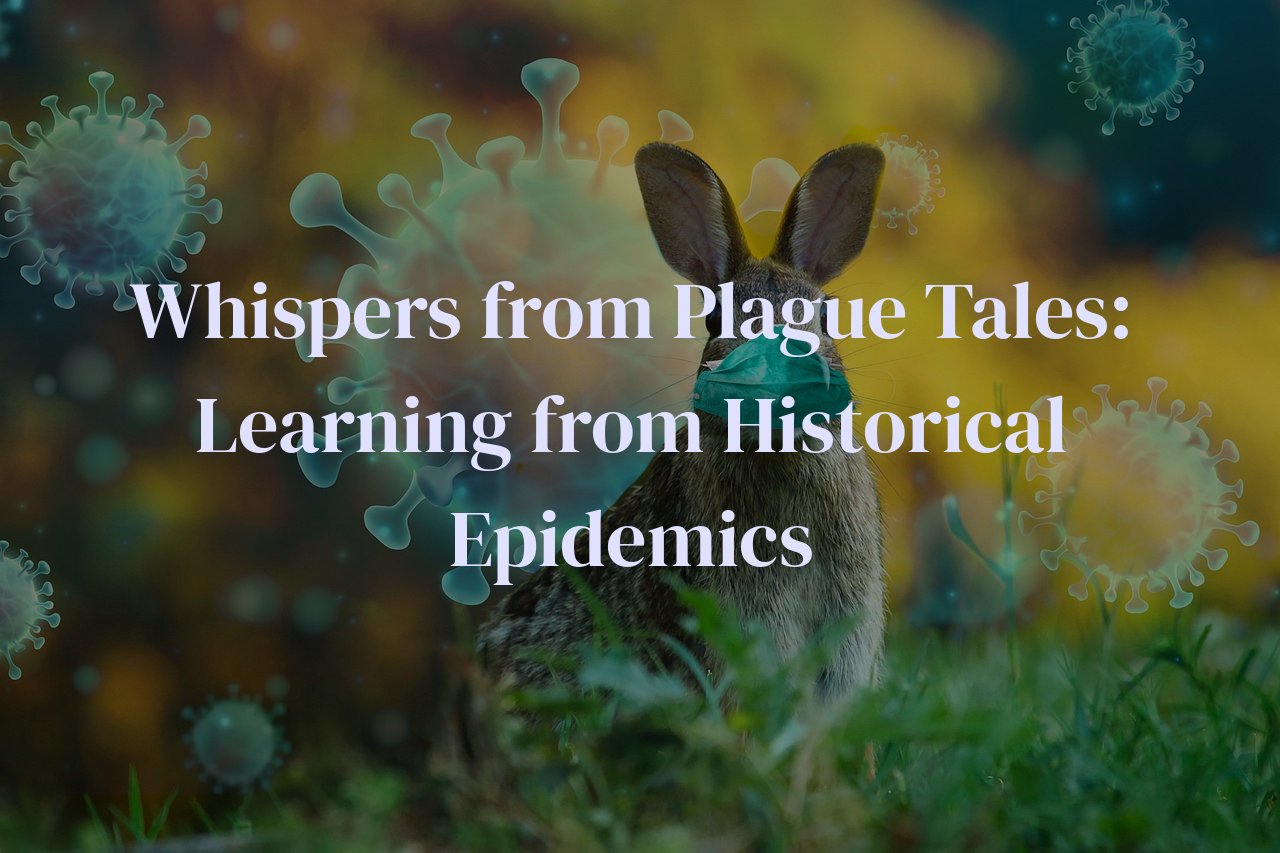
Dive into the chronicles of some of the most significant historical epidemics the world has faced. This post explores what these past epidemics can teach us about our current healthcare practices and how they shape our responses to present-day health crises. Readers will discover how understanding these events can greatly benefit modern public health strategies and personal health decisions.
By examining tales of past pandemics, you’ll gain insights into human resilience, the evolution of medical practices, and effective ways to avert future health catastrophes. From the Black Death that swept through Medieval Europe to the more recent outbreaks, each epidemic has left behind invaluable lessons that echo through time, guiding us towards a safer future.
Table of Contents
The Black Death: Catastrophe and Resilience
The nightmare of the Black Death, or Bubonic Plague, haunts European history like a ghostly shadow, a macabre yet profound episode of human suffering that simultaneously ignited unimaginable resilience. In the 14th century, the pandemic darkened the lives of millions, claiming the lives of an estimated 25-30 million people. The rapid spread, overwhelming mortality rates, and societal upheaval left deep scars, but it also spurred remarkable responses and transformations.
I often ponder on how the cataclysmic event reshaped medieval society. Cities turned into ghost towns, fields lay fallow, and entire families vanished. Yet, within this darkness, the seeds of modern health consciousness were sown. For example, understanding the need for quarantine emerged during this time. The term ‘quarantine’ derives from the Italian word ‘quaranta,’ meaning forty, as ships suspected of carrying the plague were isolated for forty days.
One can not ignore the profound impact on labor and economy. As a result of the devastating reduction in population, feudalism dwindled, giving rise to better wages and living conditions for the working class. Laborers found themselves in a position of power they had never experienced before, and this shift laid down the foundations for the middle class.
Healthcare practices also took tentative steps towards the forms we recognize today. The rudimentary, often superstitious treatments gradually gave way to more structured approaches. Physicians of the time, clad in haunting ‘plague doctor’ costumes, began experimenting with methods to understand and battle the disease, setting early precedents for public health initiatives.
The resilience of survivors is something that genuinely moves me. Despite the bleakness, human communities cling to hope and forward motion. Art, literature, and culture saw an unexpected flourish in the aftermath. The Renaissance, that remarkable flowering of human creativity and intellect, has its roots in the post-plague reconstruction of society.
The echoes of the Black Death’s catastrophe and resilience reach us today, reminding us of our capacity to rebuild and innovate in the face of overwhelming adversity. This historical lesson is timely, especially as we navigate contemporary crises, teaching us that even in moments of severe distress, there is an unyielding spirit of recovery and progress within us all.
The Spanish Influenza: A Modern Lesson in Public Health
[“
The Spanish Influenza, often cited as one of the deadliest pandemics in history, offers a plethora of lessons for modern public health. As I delved into the archives, it was clear that the world wasn’t prepared for a calamity of such magnitude. It wasn’t just a medical crisis; it was a societal upheaval.
“, ‘
One of the most basic yet striking lessons is the importance of timely and transparent communication. During the Spanish Influenza, initial communication was riddled with censorship and misinformation. Countries at war were reluctant to reveal the true extent of the outbreak. As a result, the public was left in the dark and unable to take necessary precautions. This historical misstep teaches us the invaluable role of clear, honest communication in combating epidemics.
‘, ‘
Another vital takeaway is the significance of social distancing and quarantine measures. The Spanish Flu demonstrated that delay in implementing these measures resulted in higher mortality rates. Cities that acted swiftly to shut down public gatherings, schools, and businesses saw fewer deaths. This mirrors our recent experiences with COVID-19, emphasizing that early and decisive action can indeed save lives.
‘, ‘
Furthermore, the Spanish Influenza highlighted the disparities in healthcare access. Just like today, marginalized communities bore the brunt of the epidemic due to lack of resources and medical care. This historical lens pushes us to continually work towards an equitable healthcare system where access to life-saving treatments and vaccines is not barred by socioeconomic status.
‘, ‘
Lastly, the Influenza pandemic showed the importance of global cooperation. No nation is an island in the face of a viral outbreak. The fluidity with which the Spanish Flu spread across borders underscores the necessity for international collaboration in surveillance, response strategies, and resource allocation.
‘, “
Reflecting on these lessons, I can’t help but feel a profound sense of both déjà vu and hope. The echoes of the past are not distant whispers but clarion calls urging us to learn, adapt, and proactively prepare for the next unseen enemy. In the annals of history, the Spanish Influenza serves as a dark chapter, yet also a guiding light.
“]
Cholera Outbreaks: Water Sanitation and Urban Planning
As we delve into the harrowing tales of cholera outbreaks that gripped the world, particularly in the 19th century, we uncover a critical aspect: the role of water sanitation and urban planning. The cholera pandemics, often manifesting as severe diarrhea and dehydration, brought cities to their knees, laying bare the dire need for proper hygiene and infrastructure.
One of the most profound lessons from these outbreaks is the importance of clean water. Contaminated drinking water was a primary vector for cholera. For example, in London during the mid-1800s, Dr. John Snow famously traced a cholera outbreak back to a single contaminated water pump on Broad Street. This discovery didn’t just illustrate the disease’s transmission but also underscored the urgency of ensuring safe drinking water to prevent such epidemics.
Moreover, this era revealed the necessity of improving urban planning. Many 19th-century cities lacked adequate sewage systems, leading to the contamination of water supplies. Substandard living conditions in densely populated urban areas became breeding grounds for cholera. In response, cities began to overhaul their infrastructure, developing more sophisticated sewage systems and wider streets to facilitate better drainage and reduce overcrowding. These changes not only curbed the spread of cholera but also laid the groundwork for modern urban sanitation standards.
As a public health advocate, one cannot help but feel a deep sense of empathy for the victims of these outbreaks. When I first read about the cholera epidemic in Victorian London, I was struck by the resilience of the communities and the pioneering spirit of individuals like Dr. Snow. Their determination to understand and combat the disease amidst such adversity is genuinely inspiring.
In modern times, the lessons learned from these historical cholera outbreaks resonate with our current challenges. Access to clean water remains a pressing issue in many parts of the world, reminding us that the fight for sanitation and urban improvement is far from over. The legacy of cholera highlights a timeless truth: investing in public health infrastructure is not just about preventing disease; it’s about enhancing the quality of life for all.
Smallpox Eradication: The Triumph of Vaccination
There is a poignant memory from my childhood that I often revisit, one where my grandmother would roll up her sleeve to show us the small, circular scar on her arm—her badge of honor from the smallpox vaccine. ‘We lived in fear,’ she would say, ‘but that tiny prick saved us all.’ The eradication of smallpox is one of humanity’s most profound triumphs and it begins with the story of a humble yet revolutionary innovation: the vaccine.
Smallpox, caused by the Variola virus, was one of the most devastating diseases known to mankind. The symptoms were severe and often fatal, with survivors left scarred for life. By the 18th century, smallpox had become a relentless scourge, taking countless lives, but the concept of vaccination was about to change the course of history.
It all started with Edward Jenner in 1796, a name etched into medical lore. Jenner observed that milkmaids who had contracted cowpox did not get smallpox, leading to his groundbreaking experiment of inoculating a boy with cowpox pus. This boy, James Phipps, became the first person vaccinated against smallpox, marking the dawn of immunization.
Fast forward to the 20th century, where the World Health Organization launched an ambitious global smallpox eradication campaign in 1967. The strategy was simple yet aggressive: widespread vaccination and meticulous surveillance. Health workers trekked to the remotest corners of the earth, vaccine kit in hand, driven by the vision of a smallpox-free world.
The commitment was immense. In places like India, massive vaccination drives saw millions receiving the vaccine. Innovative techniques, such as the bifurcated needle, made the vaccine delivery faster and more efficient. The campaign was not without its challenges. Regions in Africa and Asia posed logistical nightmares with difficult terrains and political instability. Yet, perseverance paid off.
I recall reading stories of courageous health teams navigating war zones, crossing deserts, and even scaling mountains to reach the last enclaves of the virus. Their stories are narratives of sheer determination and hope. By 1977, the world saw its last natural case of smallpox in Somalia. In 1980, the WHO declared the world free of smallpox—an unprecedented achievement that many believed to be unthinkable.
Reflecting on this remarkable journey, I am often struck by the collective human will and resilience it encapsulates. It is not just about science; it is a story of global solidarity, one where technological advancement met unyielding human spirit. This lesson from history emphasizes the potential we hold when the world unites towards a common goal.
Today, as we face new public health challenges, the legacy of smallpox eradication serves as a beacon of hope. It reminds us of what is possible when we rally behind science, trust in collaborative efforts, and remain steadfast in our resolve.
In my own experiences as a healthcare professional, I have seen how vaccinations continue to save lives and prevent suffering. Each small prick of the needle, each reluctant tear from a child, brings us a step closer to eradicating another disease. The triumph of smallpox eradication is a testament to our enduring capability to conquer even the most relentless foes, armed with knowledge, compassion, and unwavering persistence.
HIV/AIDS: Community and Global Awareness
Once termed the ‘gay plague,’ HIV/AIDS has been one of the most transformative public health crises in modern history. It reshaped societal attitudes towards sexuality, ignited a global health movement, and fundamentally altered the fabric of both local communities and international healthcare systems.
In the early days, misinformation spread faster than the virus itself. Stigma was rampant, isolating those diagnosed and driving the epidemic underground. It wasn’t until brave voices, some famous and others anonymous, began to champion awareness and advocacy that the tide began to turn. As a medical professional, I often reflect on stories shared by patients who lived through those years – their tales of fear, loss, and resilience are heart-wrenching yet inspiring.
Community involvement proved crucial. Grassroots organizations sprouted across cities, leading efforts to educate, support, and advocate for those affected. Local health initiatives began to focus on anonymous testing and support networks, effectively reducing stigma and encouraging more people to seek help. I recall volunteering with such an organization in my early career; the sense of shared mission and hope amidst uncertainty left a lasting impression on me.
On a global scale, the response to HIV/AIDS has been a tapestry of collective action. The establishment of the Global Fund to Fight AIDS, Tuberculosis and Malaria marked a significant milestone, funneling billions into research, treatment, and prevention. Between the financial commitments of governments and the innovative approaches from pharmaceutical companies, antiretroviral therapy became more accessible. This was a game-changer, transforming HIV from a death sentence into a manageable chronic condition.
Education and awareness campaigns became the cornerstone of prevention strategies. Pop culture played a pivotal role, with celebrities like Magic Johnson and Freddie Mercury bringing human faces to the crisis. The red ribbon, a symbol of solidarity and awareness, became omnipresent, reminding us of the ongoing battle. I have seen firsthand how these icons can inspire young people to educate themselves and take preventative measures, further curbing the spread of the virus.
Advancements in medicine, such as the development of pre-exposure prophylaxis (PrEP), have been groundbreaking. Today, comprehensive sex education, coupled with PrEP, has empowered individuals to take control of their health. Throughout my practice, I have advocated for the use of PrEP among high-risk populations and have witnessed its profound impact on preventing new infections.
The journey is far from over. HIV/AIDS has taught the world invaluable lessons about resilience, community action, and global solidarity. The echoes of this ongoing epidemic remind us of the importance of compassion, understanding, and relentless pursuit of medical innovation. Each patient story, every community outreach, and all global initiatives contribute to a legacy of hope and continued progress. These whispers from the past resonate with me, reinforcing my commitment to health advocacy and patient care every day.
Conclusion
Epidemics from the past continue to echo into our present, offering lessons in resilience, innovation, and the importance of global cooperation in combating infectious diseases. By learning from these historical episodes, we equip ourselves with the knowledge and foresight needed to navigate current and future health challenges. Let the whispers of past plagues guide us in building stronger, more prepared societies.



